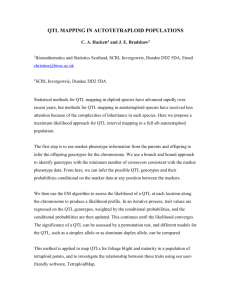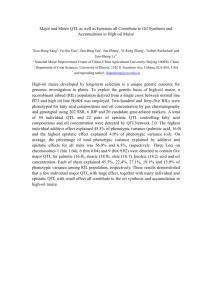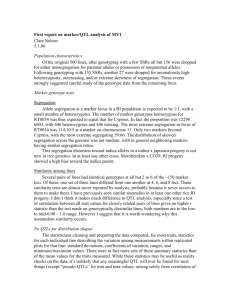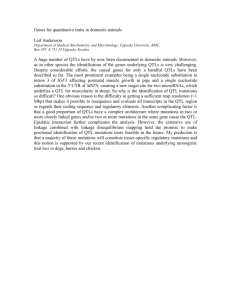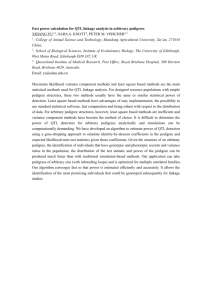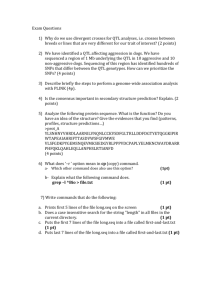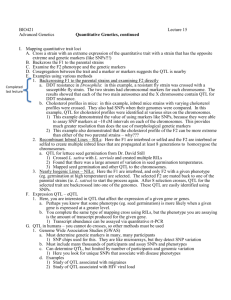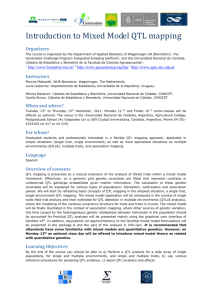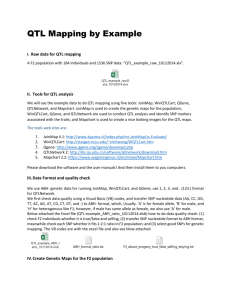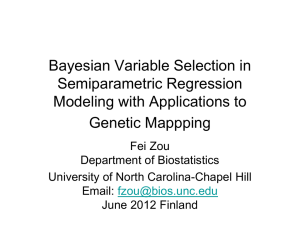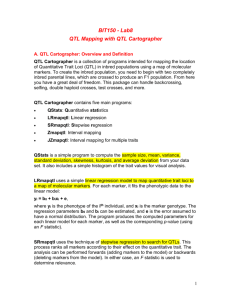Evaluation of Reciprocal Cross Design on Detection and
advertisement
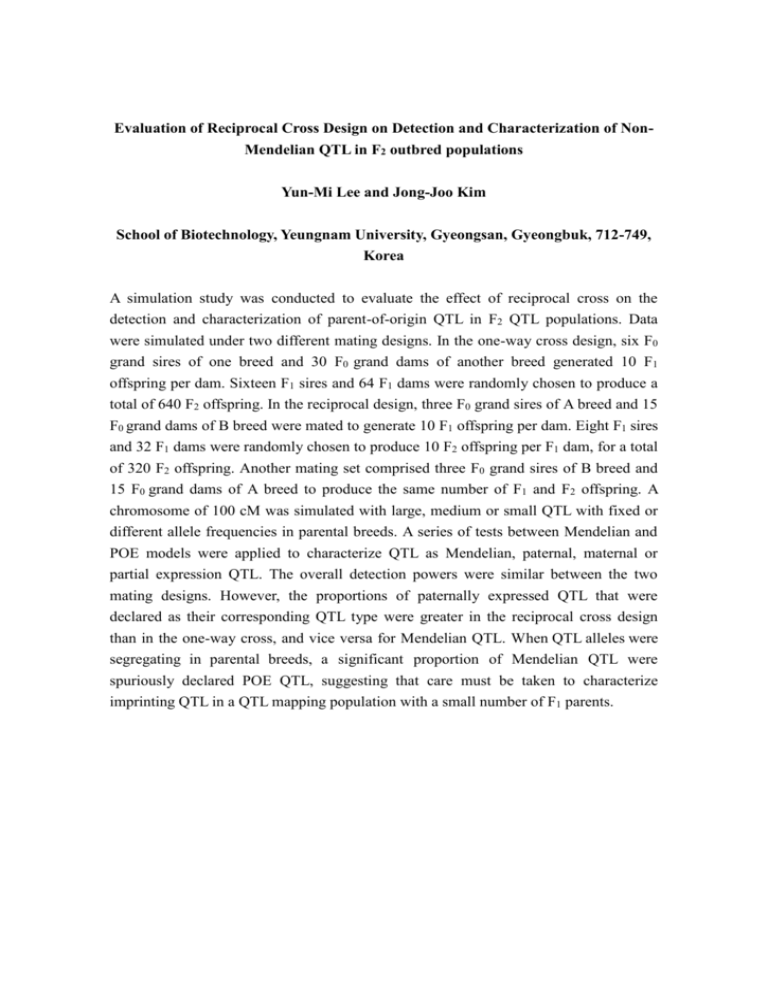
Evaluation of Reciprocal Cross Design on Detection and Characterization of NonMendelian QTL in F2 outbred populations Yun-Mi Lee and Jong-Joo Kim School of Biotechnology, Yeungnam University, Gyeongsan, Gyeongbuk, 712-749, Korea A simulation study was conducted to evaluate the effect of reciprocal cross on the detection and characterization of parent-of-origin QTL in F2 QTL populations. Data were simulated under two different mating designs. In the one-way cross design, six F0 grand sires of one breed and 30 F0 grand dams of another breed generated 10 F1 offspring per dam. Sixteen F1 sires and 64 F1 dams were randomly chosen to produce a total of 640 F2 offspring. In the reciprocal design, three F0 grand sires of A breed and 15 F0 grand dams of B breed were mated to generate 10 F1 offspring per dam. Eight F1 sires and 32 F1 dams were randomly chosen to produce 10 F2 offspring per F1 dam, for a total of 320 F2 offspring. Another mating set comprised three F0 grand sires of B breed and 15 F0 grand dams of A breed to produce the same number of F1 and F2 offspring. A chromosome of 100 cM was simulated with large, medium or small QTL with fixed or different allele frequencies in parental breeds. A series of tests between Mendelian and POE models were applied to characterize QTL as Mendelian, paternal, maternal or partial expression QTL. The overall detection powers were similar between the two mating designs. However, the proportions of paternally expressed QTL that were declared as their corresponding QTL type were greater in the reciprocal cross design than in the one-way cross, and vice versa for Mendelian QTL. When QTL alleles were segregating in parental breeds, a significant proportion of Mendelian QTL were spuriously declared POE QTL, suggesting that care must be taken to characterize imprinting QTL in a QTL mapping population with a small number of F1 parents.
